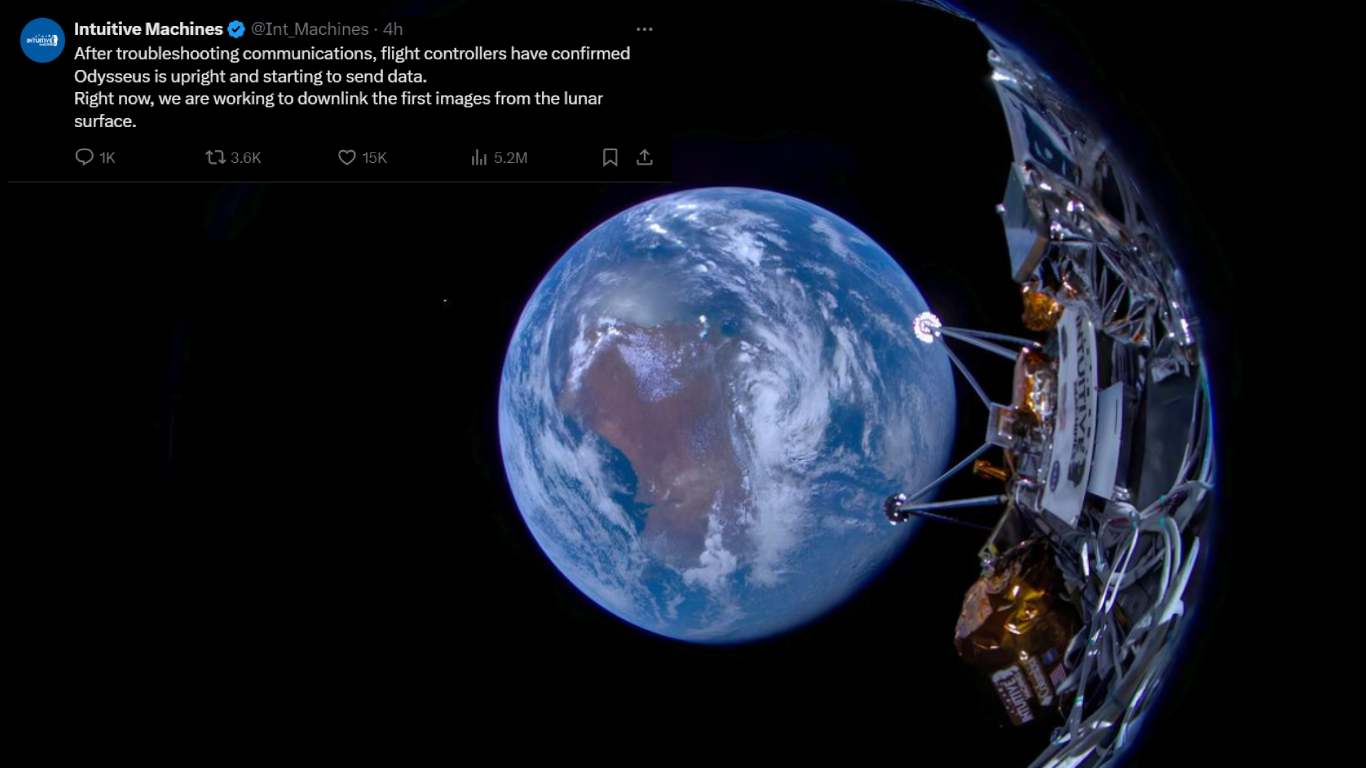US Odysseus Become 1st Spacecraft to Land on Moon's Surface in 50 Year
Thangaraja Palaniappan (Author) Published Date : Feb 23, 2024 12:02 ISTScience
Odysseus Spacecraft
Intuitive Machines, a Houston-based Lunar Programs Company, has developed the Odysseus spacecraft. It is also called the spacecraft Odie.
It became the very first US-made spacecraft that made history by landing on the lunar surface in over fifty years.
Navigation and Communication Issues in Odysseus
The lander was in a standard condition and started sending data. However, the developers of this spacecraft had to go through some navigation issues to perform the difficult landing, and they overcame this situation shortly.
They also had to resolve some communication issues. Since they have solved the navigational and communication issue, it is now expected to send the lander's first images from the Moon's surface.
It is to note that, the US failed a lander mission last month. The Odysseus lander mission has now made history as the first official US spacecraft to land on the lunar surface in 50 years.
Apollo 17 Lunar Module Challenger
Odysseus is also the 1st commercial spacecraft of the US to land on the moon's surface. Before this, Apollo 17's lunar module Challenger was the last US spacecraft that landed on the moon's surface on December 7, 1972. It was a crewed spacecraft which carried the Astronauts Harrison Schmitt and Eugene Cernan. They were the last humans to set foot on the moon's surface.
So, after 50 years, the Odie was the only successful US lunar lander after many failed landers. It is also an uncrewed spacecraft.
Odysseus Mission
The Odysseus was launched on February 15 using the SpaceX Falcon 9 rocket-powered launch vehicle. This spacecraft's ultimate mission is to pave the way for future human explorations on the Moon.
Previously on X, Intuitive Machines posted, saying, 'After troubleshooting communications, flight controllers have confirmed that Odysseus is upright and starting to send data. Right now, we are working to downlink the first images from the lunar surface.'




